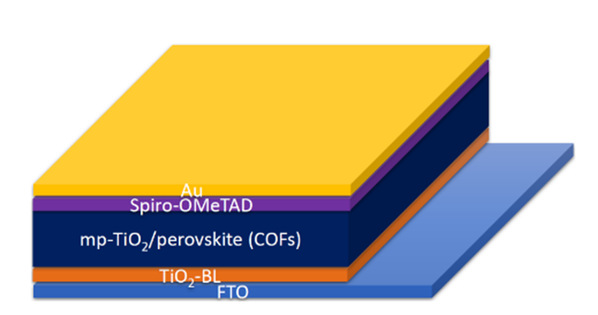Advanced Energy Materials, 2022, 2200480
Abstract:
The power conversion efficiency (PCE) of perovskite solar cells (PSCs) has rapidly increased over the past 10 years. However, along with further efficiency improvements, it is necessary to improve the long-term stability of perovskite materials, which limits the commercialization of PSCs. Therefore, it is urgent to find ways to simultaneously suppress charge recombination and degradation of perovskite materials. Here, two covalent organic frameworks (COFs) are synthesized by reacting thieno[3,2-b]thiophene-2,5-dicarbaldehyde (TTDA) with 1,3,5-tris(4-aminophenyl)benzene (TAPB) or 2,4,6-tris(4-aminophenyl)-1,3,5-triazine (TTA). The addition of these two COFs to the perovskite layer allows for more efficient charge separation through spatially separated frontier orbitals, and can also inhibit the degradation of the FAPbI3 layer and the formation of δ-FAPbI3. The PSCs with TTDA-TTA-COF exhibit higher efficiency and open-circuit voltage than those with TTDA-TAPB-COF. This is attributed to the better crystallization of perovskites induced by stronger well-conjugated properties and π–π interactions in TTDA-TTA-COF. The champion PSC with TTDA-TTA-COF exhibits a PCE of 23.35% and excellent long-term stability. To the best of one's knowledge, this is the highest efficiency among PSCs fabricated using crystalline organic frameworks as additives. This work provides a new route to fabricate efficient and stable PSCs by incorporating proper COFs.

Link: https://onlinelibrary.wiley.com/doi/full/10.1002/aenm.202200480
--校内链接--
--校外链接--

微信公众号